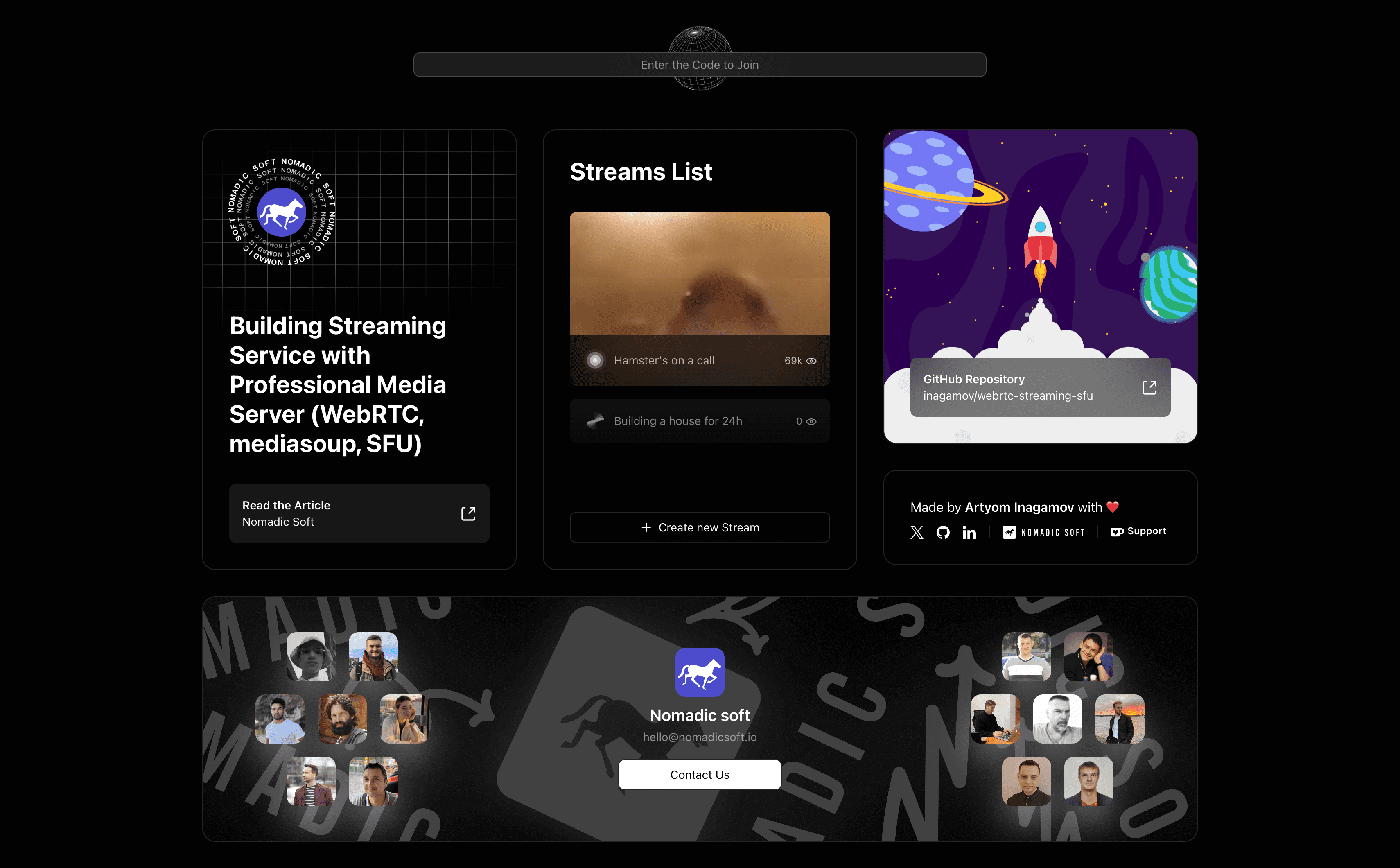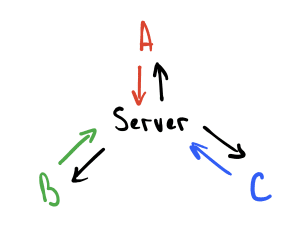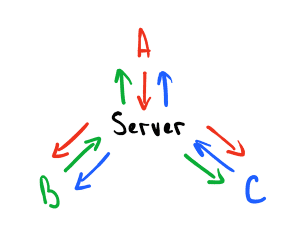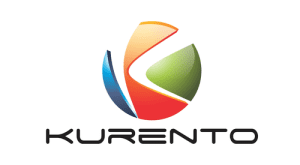
In the digital age, real-time video communication has become vital for personal and professional interactions across the globe. This technology allows for immediate face-to-face conversations, virtual meetings, and remote services like education and telehealth, overcoming the constraints of distance and time. At the heart of this revolution is Web Real-Time Communication (WebRTC), an open-source project that has become a standard for integrating video, audio, and data transfer directly into browsers without extra plugins. This innovation has lowered entry barriers for developers and businesses, facilitating live interactive features in applications. WebRTC’s widespread adoption highlights its importance in enabling instant, reliable communication and its impact on the future of online connectivity.
Web Real-Time Communication (WebRTC) is a groundbreaking technology that enables direct, real-time communication between web browsers and devices over the internet. It supports video, audio, and data transfer without the need for external plugins or third-party software, leveraging a set of standard protocols and JavaScript APIs to facilitate peer-to-peer (P2P) connections. The core components of WebRTC include:
WebRTC’s design prioritizes flexibility, security, and high-quality communication. It incorporates advanced features like echo cancellation, noise suppression, and automatic gain control to enhance the user experience. Additionally, WebRTC employs secure protocols like DTLS (Datagram Transport Layer Security) and SRTP (Secure Real-Time Protocol) to ensure encrypted communication and data integrity.
Despite these challenges, WebRTC continues to be a transformative force in the realm of real-time communication, driving innovation and expanding the possibilities of how we connect and interact online.
In the realm of WebRTC, evolving from simple one-on-one video chats to more complex, multi-participant or broadcast applications is a natural progression. This expansion leverages WebRTC’s fundamental peer-to-peer connectivity, but requires more advanced architectures for scalability and efficiency. Three primary architectures facilitate this transition: Mesh, MCU (Multi-Point Control Unit), and SFU (Selective Forwarding Unit).



Each architecture has its trade-offs, with Mesh being suitable for small, simple applications, MCU for scenarios where a composite stream is preferred but at a higher cost, and SFU offering a balance between scalability and server demands, albeit with potentially high bandwidth requirements for participants.
In the context of WebRTC applications, media servers play a pivotal role in enhancing scalability, reliability, and functionality beyond the basic peer-to-peer (P2P) communication model. While WebRTC inherently supports direct connections between users, this model can be limited in terms of scalability, particularly for applications requiring multi-party video conferencing, broadcasting, or advanced media processing features. Here’s where media servers come into play.





Each of these media server solutions comes with its own set of features, strengths, and use cases. The choice among them depends on the specific requirements of the application, such as the need for scalability, specific media processing capabilities, ease of use, and the development environment. Developers must consider these factors alongside the community support, documentation, and long-term sustainability of the solution when making their selection.
MediaSoup is a powerful and efficient WebRTC server for Node.js, designed to enable developers to build scalable and versatile real-time communication applications. It is particularly known for its Selective Forwarding Unit (SFU) capabilities, which are essential for handling multi-party video conferencing scenarios efficiently. Let’s delve into the architecture, key components, and integration of MediaSoup with Node.js, along with how to set up and configure it for a scalable WebRTC application.
MediaSoup’s architecture is designed around a few core principles: low latency, high performance, and modularity. Its key components include:
This modular design allows MediaSoup to be highly scalable, managing multiple streams and participants efficiently by leveraging the capabilities of modern multi-core processors.
MediaSoup is designed to work seamlessly with Node.js, providing a JavaScript API that interacts with the underlying C++ components. The integration is facilitated through a MediaSoup Node.js package that developers can include in their projects. This package acts as a bridge between your Node.js application and the MediaSoup Worker processes, allowing you to control the media pipeline programmatically.
In the evolving landscape of real-time communication, the practical application of technologies like WebRTC, SFU (Selective Forwarding Units), and media servers like mediasoup is best understood through concrete examples. This section delves into a case study that exemplifies the process of building a scalable streaming service, emphasizing the use of WebRTC and SFU for efficient, high-quality video streaming.
Before we explore the intricacies of the streaming service’s architecture and functionality, it’s crucial to lay the groundwork by setting up the project environment. For this, we turn to an exemplary GitHub repository that serves as both a guide and a template for creating a robust streaming service. Interested readers and developers are encouraged to visit the following repository:
https://github.com/inagamov/mediasoup-streaming
The repository contains all the necessary code, documentation, and step-by-step instructions in the README file to get your project up and running. Following these instructions meticulously will ensure you have a solid base from which to explore the nuances of implementing a scalable streaming service using WebRTC and SFU. It’s a practical starting point that showcases the integration of various technologies and frameworks discussed earlier in this article.
# Go to ./ssl folder
cd ssl/
# Generate self-signed X.509 certificate (to use the app over https)
openssl req -x509 -newkey rsa:4096 -nodes -keyout key.pem -out cert.pem -days 365
# Create symbolic link for media-server's docker container
ln cert.pem ../media-server/ssl
ln key.pem ../media-server/ssl
# Go to ./frontend folder
cd ../frontend/
# Install frontend dependencies
# Check your node version (we used 20v, but you may try with 18v or even 16v)
npm i
# Create .env file (* don't forget to change 0.0.0.0 to your own IP address)
cp .env.example .env
# Run the server (+ expose)
npm run dev -- --host
# Go to ./media-server folder
cd ../media-server/
# Create .env file (* don't forget to change 0.0.0.0 to your own IP address)
cp .env.example .env
# Docker (check ./media-server/Makefile file)
make build
make up
Once the project setup is complete, the next phase is to understand how the streaming service functions from a technical standpoint. The architecture of this service is designed to handle multiple video streams efficiently, distributing them across a network of participants without overburdening any single node. This efficiency is key to achieving scalability and maintaining high performance as the number of participants grows.
The core of the service revolves around the SFU architecture. Unlike traditional mesh networks, where each participant connects to every other participant, thereby exponentially increasing the network load with each new addition, SFU simplifies this by acting as a central hub. Each participant sends their stream to the SFU, which then forwards it to other participants. This not only reduces the bandwidth requirements for each participant but also allows for more sophisticated control over the video quality, latency, and overall user experience.
Mediasoup, as highlighted in the repository, plays a critical role in this architecture. It provides the necessary tools and protocols to manage media streams efficiently, ensuring that video and audio data are transmitted securely and with minimal delay. The integration of Mediasoup with Node.js enables developers to leverage JavaScript to control and manipulate media streams, making the development process more accessible and flexible.
With the project setup and a clear understanding of the service’s workflow, the next steps involve diving deeper into specific aspects of the streaming service. This includes optimizing video quality based on network conditions, securing the communication channels to prevent unauthorized access, and exploring ways to further scale the service to accommodate larger audiences without compromising performance.
Each of these areas presents its own set of challenges and opportunities for innovation. By addressing them, developers can not only enhance the user experience but also push the boundaries of what’s possible with real-time video communication.
In the following sections, we will explore these aspects in detail, providing insights and practical advice on overcoming the challenges of building a scalable streaming service. Whether it’s through adaptive bitrate streaming, encryption protocols, or the deployment of additional SFUs for load balancing, the goal is to offer a seamless, high-quality streaming experience to users across the globe.
The files are interconnected, forming the backbone of the media server. The index.ts file kickstarts the application, leveraging routes/index.ts to define accessible endpoints. websockets.ts and mediasoup.ts provide foundational communication and media processing capabilities. Models like stream.ts, streamMessage.ts, and user.ts define the data structures, while stores/index.ts handles data persistence. Central to orchestrating these operations is streamsController.ts, which interacts with models, utilities, and client requests to manage streaming sessions effectively.
This structured approach ensures modularity, scalability, and maintainability, enabling the development of complex streaming services capable of handling real-time communication demands.
The media server API, as outlined in the provided streamsController.ts file, offers a robust set of endpoints for managing and interacting with media streams in a real-time communication environment.
Here’s a documentation summary explaining how to use each method in the media server API.
POST /stream @createStream
GET /streams @getStreams
GET /stream/:id @getStream
DELETE /stream/:id @endStream
GET /rtp-capabilities @getRtpCapabilities
POST /web-rtc-transport @storeWebRtcTransport
POST /transport-connect @transportConnect
POST /transport-produce @transportProduce
POST /transport-recv-connect @transportRecvConnect
POST /consume @consume
POST /consumer-resume @consumerResume
Each method is crucial for the life cycle of a stream within the media server, from creation to deletion, including detailed management of WebRTC transports for producing and consuming media. By leveraging these endpoints, developers can build comprehensive real-time communication applications capable of handling complex streaming scenarios.
In conclusion, the integration of WebRTC technologies, especially through systems such as MediaSoup, has greatly enhanced the capabilities of real-time video communication, breaking down barriers that once limited communication in digital media in The theme of changing the fabric and the journey from foundational components of WebRTC to the robust framework required for flexible multinational communication highlights vibrant, dynamic digital innovation through extensive MediaSoup research and practical applications in developing scalable streaming services We envisioned a future—where accessibility, quality, and security would combine to create seamless and enjoyable experiences for users everywhere in the universe.
Furthermore, from maintaining browser compatibility to maintaining complex security protocols, the challenges and challenges of implementing WebRTC lie in an area ripe for further innovation and progress has been made As we press forward it is clear that advances in real-time video communication will transform education, healthcare, . business and entertainment . The potential to create more inclusive, interactive and impactful digital experiences is limitless, heralding a future where the world is more connected, active and engaged than ever before. As entrepreneurs, entrepreneurs and innovators, our mission is to continue to push the boundaries of what is possible, ensuring that the digital world remains a place of opportunity, growth and connectivity for all.

Custom eCommerce development starts with your needs. No matter what size your business is, crafting killer websites or robust applications with Nomadic Soft is a winning strategy. Our development team will always use the latest tech tools to build your business interactive and engaging web interfaces and applications.